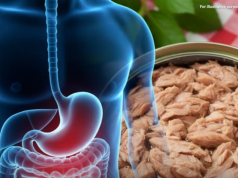A stroke doesn’t always strike without warning.
While some occur suddenly and without preamble, many are preceded by subtle—but significant—symptoms that can appear days, even weeks in advance. These early signals aren’t random. They’re your body’s urgent message: something is wrong. Ignoring them could mean missing a critical window to prevent permanent brain damage—or worse.
Time is everything.
Every minute counts. The faster a stroke is treated, the greater the chance of survival and full recovery. In fact, prompt medical intervention can mean the difference between walking away and lifelong disability.
Understanding what a stroke truly is—and recognizing its quiet warnings—could save your life or someone you love.
🧠 What Is a Stroke?
A stroke occurs when blood flow to part of the brain is interrupted, cutting off oxygen to vital brain cells. Within minutes, those cells begin to die.
There are three main types:
Ischemic Stroke (87% of cases)
Caused by a blood clot or plaque blocking an artery in the brain—the most common form.
Hemorrhagic Stroke
Occurs when a weakened blood vessel bursts, causing bleeding inside the brain.
Transient Ischemic Attack (TIA) – “Mini-Stroke”
A temporary blockage that resolves on its own. Though symptoms may fade, it’s not harmless.
🔔 10 Warning Signs That May Appear Weeks Before a Stroke
These symptoms often come and go, which is why they’re so easily dismissed. But don’t be fooled. Even brief episodes deserve immediate attention.
1. Sudden Headaches with No Clear Cause
Not just any headache—this one feels different.
It strikes like thunder: sudden, severe, explosive. Often described as the “worst headache of my life.”
May be accompanied by dizziness, nausea, or vomiting.
👉 Most commonly linked to hemorrhagic strokes.
2. Unexplained Dizziness or Loss of Balance
Feeling wobbly, unsteady, or as if the room is spinning.
Happens without triggers like ear infections or vertigo.
Often paired with difficulty walking or coordinating movements.
3. Vision Changes in One or Both Eyes
Blurred vision, double vision, or sudden loss of sight—even if only for seconds.
Can affect one eye or both.
📌 May signal reduced blood flow to the optic nerve or visual cortex.
4. Numbness or Tingling in Face, Arm, or Leg
Typically affects one side of the body.
Comes on suddenly or builds gradually over days.
Sensation ranges from pins-and-needles to complete numbness.
5. Difficulty Speaking or Understanding Speech
Slurred words, trouble finding the right word, or jumbled sentences.
You might struggle to follow a conversation or seem confused.
Others may say, “You’re not making sense.”
6. Sudden Weakness in Limbs
An arm or leg feels heavy, weak, or hard to lift.
Dropping objects unexpectedly.
Dragging a foot while walking.
🚨 Classic red flag: Try raising both arms. If one drifts downward, seek help immediately.
7. Confusion or Memory Lapses
Forgetting recent events, getting lost in familiar places, or sudden mental fog.
❗ Especially concerning if new or worsening in someone without dementia.
8. High Blood Pressure Spikes
Consistently high readings (140/90 mmHg or higher).
Sudden surges—even if temporary—are dangerous.
Often called “the silent killer,” hypertension damages blood vessels over time, setting the stage for stroke.
✅ Regular monitoring can catch this early—before it becomes catastrophic.
9. Transient Ischemic Attacks (TIAs) – Mini-Strokes
Short-lived episodes mimicking stroke symptoms: slurred speech, weakness, vision loss.
They typically resolve within minutes to hours.
But here’s the truth: a TIA is a medical emergency, not a false alarm. It means a major stroke could be imminent.
10. Persistent Fatigue or Sleep Disturbances
Unusual exhaustion despite adequate rest.
New-onset insomnia or excessive daytime sleepiness.
While fatigue has many causes, when combined with other signs, it may point to vascular stress or micro-events in the brain.
What Should You Do If You Notice These Signs?
Don’t wait. Don’t downplay it.
Even if symptoms disappear, seek medical evaluation immediately.
Early diagnosis allows doctors to:
- Identify blockages or weakened vessels
- Manage blood pressure and cholesterol
- Prescribe preventive medications
- Recommend lifestyle changes
Prevention is powerful. Up to 80% of strokes are preventable with proper care.
Listen to Your Body
Your body speaks in whispers before it screams.
That strange headache, fleeting numbness, or momentary confusion isn’t “just stress.” It could be a plea for help.
A stroke doesn’t have to be inevitable.
By recognizing these 10 signs—sometimes appearing a month or more in advance—you gain something priceless: time.
And time, used wisely, can save a life.










